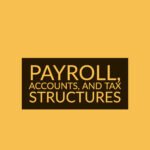Tax-Free First Home Savings Account (FHSA): A Comprehensive Guide to Achieving Homeownershi
Introduction: Owning a home is a significant milestone for many Canadians, and the Tax-Free First Home Savings Account (FHSA) has emerged as a valuable initiative to help individuals save for their dream home. With the soaring cost of housing in Canada, the FHSA offers an accessible and tax-efficient approach for first-time homebuyers to build a solid financial foundation for homeownership. In this comprehensive guide, we will delve into all aspects of the FHSA, from its advantages and eligibility criteria to the account setup process and withdrawal procedures.
Benefits of the Tax-Free FHSA: The FHSA comes with a range of compelling benefits designed to facilitate your journey to homeownership:
Tax-Free Growth: Similar to the Tax-Free Savings Account (TFSA), the FHSA offers tax-free growth on all investment gains. Interest, dividends, and capital gains earned within the account remain untaxed, allowing your savings to accumulate rapidly. Tax-Free Withdrawals: When you use FHSA funds for your first home purchase, you won’t be subject to taxation upon withdrawal. This distinct advantage sets the FHSA apart from savings vehicles like Registered Retirement Savings Plans (RRSPs), which are subject to income tax upon withdrawal. Diverse Investment Options: Similar to a TFSA, the FHSA allows investments in various products such as stocks, bonds, mutual funds, and Guaranteed Investment Certificates (GICs). This flexibility lets you tailor your investment strategy to align with your risk tolerance and financial objectives. Preservation of Government Benefits: FHSA withdrawals do not impact your eligibility for government benefits like the Canada Child Benefit or Old Age Security. The funds withdrawn from FHSA are not considered taxable income, ensuring your benefits remain intact.
Eligibility Criteria for FHSA: To qualify for a Tax-Free First Home Savings Account, you need to fulfill the following prerequisites:
Canadian Residency: You must be a resident of Canada. Age Requirement: Individuals must be at least 18 years old, although exceptions exist in certain provinces/territories where the legal age for contractual agreements is 19 years. Valid Social Insurance Number (SIN): A valid SIN is essential for account setup. First-Time Homebuyer: The FHSA is exclusively available to first-time homebuyers, meaning you haven’t previously owned a home or lived in a property owned by a spouse or common-law partner.
Setting Up Your FHSA: Setting up an FHSA is a straightforward process:
Research Financial Institutions: Identify banks, credit unions, or trust companies offering FHSA accounts. Select a Provider: Choose a financial institution and visit their website or local branch to initiate the FHSA setup. Provide Required Information: Furnish your date of birth, SIN, and any necessary identification documents. Deposit Funds: Transfer funds to your FHSA account as a lump-sum deposit or through regular contributions. Note: While you can open multiple FHSA accounts, the total contributions across all accounts must not surpass your annual FHSA contribution limit. Exceeding this limit can result in penalty taxes.
FHSA Contribution Limits and Rules: Adhering to the rules and limits of FHSA contributions is crucial:
Current Contribution Limits: In the first year, the FHSA contribution limit is $8,000, and unused contribution room carries forward. The lifetime limit is capped at $40,000. Penalty for Overcontribution: Similar to TFSAs, overcontributing to your FHSA for a year incurs a 1% monthly tax on the highest excess amount for that month. Deductibility: FHSA contributions can generally be deducted from your income tax return. However, transfers from an RRSP to an FHSA are not deductible. Tax Implications: Non-home-buying withdrawals from FHSA are taxable income.
Withdrawals from FHSA: When you’re ready to buy your first home, FHSA withdrawals come into play under specific conditions:
Principal Residence Requirement: You must not have lived in a principal residence that you owned or co-owned in the same calendar year as the withdrawal or the preceding four years. Qualifying Home: Withdrawn funds must be used for purchasing or constructing a qualifying home in Canada. Principal Residence Status: The home must be your principal residence. Completion Deadline: The home’s construction or purchase should conclude before October 1st of the following year. Complying with these criteria allows you to withdraw your entire FHSA balance, including tax-free growth, for your first home purchase.
FHSA vs. RRSP Home Buyers’ Plan: While the FHSA aims to facilitate homeownership, the RRSP Home Buyers’ Plan (HBP) also provides a home-saving avenue. Understanding their distinctions is vital:
Tax Treatment: Both FHSA and HBP allow tax-free withdrawals for home purchases and offer tax deductions for contributions. Repayment Terms: HBP mandates repayment over 15 years, whereas FHSA does not require repayments. Contribution Limits: FHSA’s annual limit is $8,000, whereas RRSP limits are determined by earned income (up to $31,560 in 2023). Choosing the best option depends on your financial situation and goals.
Conclusion: The Tax-Free First Home Savings Account (FHSA) presents a valuable opportunity for aspiring homeowners to save effectively and access tax-free growth. By grasping the advantages, meeting eligibility criteria, adhering to contribution limits, and understanding withdrawal rules, you can strategically pave the path to homeownership. Reputable resources such as tax4less.ca, accountants near Vaughan, or those located near Hwy 7 and Weston can offer tailored guidance and support for maximizing the potential of the FHSA.
Disclaimer: This guide is provided for informational purposes and does not substitute professional financial advice. Consulting qualified experts is advised for personalized financial decisions.

 Previous Post
Previous Post Next Post
Next Post